#SOCaaS
Explore tagged Tumblr posts
Text
SOCaaS, which stands for Security Operations Center as a Service, is becoming popular as a way to protect against cyber threats. It's like having a team of experts watch over your digital stuff for you.
2 notes
·
View notes
Text
0 notes
Text
The SOC as a Service (SOCaaS) market is estimated to be worth USD 7.37 Billion in 2024 and is projected to reach USD 14.66 Billion by 2030, at a CAGR of 12.2% during the forecast period.
0 notes
Text
https://github.com/anushka224473/BeaconMetrics/blob/main/North America Security Operations Center as a Service (SOCaaS) Software Market Drivers And Trends.md
0 notes
Text
Understanding SOC as a Service: Enhancing Cybersecurity for Your Business
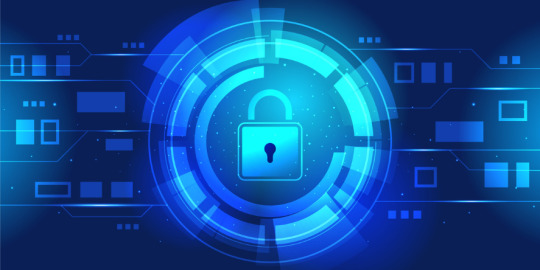
In today's digital landscape, cybersecurity threats are increasingly sophisticated and pervasive, making robust protection essential for businesses of all sizes. Security Operations Centers (SOCs) play a critical role in monitoring, detecting, and responding to cybersecurity incidents. SOC as a Service (SOCaaS) offers a streamlined approach for businesses to leverage SOC capabilities without the need for extensive internal resources. This article explores SOC as a Service in detail, highlighting its role in enhancing cybersecurity and its benefits for businesses.
What is SOC as a Service?
SOC as a Service is a model where organizations outsource their cybersecurity monitoring, detection, and response functions to a specialized third-party provider. This provider operates a Security Operations Center equipped with advanced tools, technologies, and skilled analysts who monitor the organization's IT environment for threats and vulnerabilities.
Enhancing Cybersecurity with SOC as a Service
1. Continuous Monitoring and Threat Detection
SOC as a Service provides businesses with continuous monitoring of their networks, endpoints, and systems. This proactive approach enables early detection of suspicious activities, potential breaches, or anomalies that could indicate a security threat. By monitoring around the clock, SOCaaS helps mitigate risks and reduce the impact of cyber incidents.
2. Rapid Incident Response
In the event of a cybersecurity incident, SOCaaS facilitates rapid incident response. Trained security analysts within the SOC can swiftly investigate alerts, analyze the nature and scope of the incident, and initiate response actions to contain and mitigate the threat. This quick response helps minimize downtime, data loss, and reputational damage for the organization.
3. Access to Advanced Security Expertise
SOC as a Service providers employ cybersecurity professionals with specialized skills and expertise in threat hunting, incident response, and security operations. These professionals stay updated on the latest threats, tactics, and security trends, bringing a high level of knowledge and experience to effectively protect businesses from evolving cyber threats.
4. Scalability and Flexibility
One of the key advantages of SOC as a Service is its scalability. Businesses can scale their cybersecurity operations up or down based on their needs and growth trajectory without significant upfront investments. SOCaaS providers offer flexible service plans that cater to diverse organizational sizes and industries, ensuring customized cybersecurity solutions.
5. Cost Efficiency
Outsourcing cybersecurity to a SOCaaS provider can be cost-effective compared to maintaining an in-house SOC. It eliminates the need for organizations to invest in expensive security infrastructure, tools, and ongoing training for cybersecurity personnel. SOCaaS providers leverage economies of scale, spreading costs across multiple clients and offering predictable pricing models.
6. Compliance and Regulatory Support
Many industries are subject to stringent regulatory requirements concerning data protection and cybersecurity (e.g., GDPR, HIPAA, PCI DSS). SOC as a Service helps businesses achieve and maintain compliance by implementing security measures, monitoring for compliance violations, and providing audit-ready reports to regulatory authorities.
Implementing SOC as a Service: Key Considerations
1. Choosing the Right Provider
Selecting a reputable SOC as a Service provider is crucial. Evaluate their industry experience, track record, service offerings, and compliance certifications. A provider with robust security protocols, advanced technologies, and proactive threat detection capabilities is essential for effective cybersecurity management.
2. Integration with Existing Security Infrastructure
Ensure seamless integration of SOCaaS with your organization's existing security infrastructure and IT environment. Compatibility with your current systems, applications, and workflows is vital to maximize the effectiveness of SOC operations and minimize disruptions.
3. Service Level Agreements (SLAs) and Reporting
Establish clear SLAs with the SOCaaS provider regarding response times, incident handling procedures, and communication protocols. Regular reporting and performance metrics should be defined to monitor the effectiveness of cybersecurity measures and ensure alignment with business objectives.
In conclusion, SOC as a Service offers businesses a proactive and effective approach to cybersecurity management. By outsourcing cybersecurity monitoring and response functions to a specialized provider, organizations can enhance their security posture, mitigate risks, and respond swiftly to cyber threats. SOCaaS provides continuous monitoring, rapid incident response, access to advanced expertise, scalability, cost efficiency, and regulatory compliance support. As cybersecurity threats continue to evolve, adopting SOC as a Service becomes increasingly crucial for businesses looking to safeguard their data, operations, and reputation in an interconnected digital world.
0 notes
Text
Demystifying SOC-as-a-Service (SOCaaS)
http://securitytc.com/T2PwRY
0 notes
Text
What Is A Managed SOC? Benefits And Variants
Why Use A Managed SOC?
The IT infrastructure of a growing business also becomes larger, more complex, and more difficult to secure. Each device produces many different activity and security logs which can provide critical security information, but need to be reviewed by specialists.
Security Operations Centers (SOCs) play a critical role in protecting organizations from cybersecurity attacks by centralizing expertise to service the entire organization.
While there are several implementation models, organizations can often benefit the most from a fully outsourced and managed SOC. To fully understand the benefits of a managed SOC, we must first understand the role of the SOC in managing cybersecurity detection and response.
What Is A SOC?
A Security Operations Center (SOC) provides a single point of coordination for security experts to analyze, prioritize, and further investigate security alerts and signs of malicious behavior. The SOC can also provide a single point of coordination and management of other security initiatives.
SOCs can be implemented as a physical location, a virtual team, or acquired as an outsourced resource. SOCs require specialized security tools and highly trained IT security professionals to be effective.
What Does A SOC Do?
Sometimes called an Information Security Operations Center, a SOC monitors the entire IT infrastructure of the organization full time – 24 hours a day, 7 days a week, and for all 365 days of the year. SOC teams use tools, processes and their experience to:
Prioritize security alerts and anomalous behavior
Analyze alerts as potentially malicious (or false alarms)
Investigate malicious activity
Respond to cyberattacks directly or alert managed detection and response (MDR) teams
SOCs collect data and event logs from across the entire IT environment, and can play a pivotal role in identifying, protecting against, and responding to attacks against the organization. Typical threats can include, but certainly will not be limited to phishing, malware, distributed denial of service (DDoS) attacks, ransomware, and unauthorized data exfiltration.
A SOC’s primary purpose is to maintain, monitor, and constantly improve an organization’s cybersecurity technologies and capabilities. Depending upon the needs of the organization, the SOC may also play a role in:
Anticipating threats (gathering cyber threat intelligence, etc.)
Managing the centralized log repository (security information and event management (SIEM) tools, security data lake, etc.)
Managing risk and compliance requirements
Patches and updates
Proactive threat hunting and monitoring for attacks that did not trigger alerts
Recovering lost or stolen data and determining compromised assets
Security strategy (architecture design, incident response strategy, etc.)
Tool and alert tuning (reduce false alarms, improve log value, etc.)
Vulnerability detection, assessment, and mitigation
The exact role of the SOC and where they might receive or handoff alerts for threat investigation depends upon the type of SOC deployed and other security and incident response infrastructure.
Types Of SOCs
SOCs tend to mimic Network Operations Centers (NOCs) in structure, but instead of operational efficiency the SOC will focus on security alerts and will also incorporate alerts from servers, endpoints, applications, and cloud resources. We go into more detail in Types of Security Operations Centers, but as a quick summary most organizations will implement one of five general types of SOCs:
Multifunction SOC / NOC
Dedicated SOC
Command SOC
Co-Managed SOC
SOC-as-a-Service (SOCaaS)
Multifunction SOC / NOC
Multifunctions SOC / NOC centers combine NOC and SOC functions to monitor network operations and security. These centers can be less expensive to maintain because they share expertise, tools, and alert monitoring.
However, networking concerns often take priority, especially since network improvements are easier to quantify for return on investment (ROI), and security concerns can be easily marginalized. This option is best for small enterprises and often does not survive the growth of the organization without a strong balance.
Dedicated SOC
Dedicated SOCs create a team of internal security experts working as one group either in a single location or virtually. A Dedicated SOC creates great security visibility and centralized expertise for the organization.
However, Dedicated SOCs require at least 5 full time experts to achieve 24/7/365 coverage and expensive tools to manage high volumes of alerts with a smaller staff. This SOC model is best for larger enterprises with few offices.
Command SOC
Command SOCs use a dedicated group of IT experts working as one group to oversee a network of smaller SOCs monitoring specific infrastructure or locations. Centralized command and management of distributed expertise provides the most comprehensive option for in-house SOCs.
However, Command SOCs are incredibly resource intensive. Ironically, Command SOCs can also lead to gaps in responsibility between branch SOCs and the Command SOC unless they are designed and coordinated very carefully.
Only the largest organizations can afford in-house Command SOCs so they don’t tend to exist outside of governments, banks, cloud providers, and other huge enterprises.
Co-Managed SOC
Co-Managed SOCs use a combination of local on-site monitoring solutions and staff in addition to external resources. This model provides enormous flexibility for tools and staffing and enables options to outsource either low-end tasks to low-cost resources (overseas offices or vendors) or high-end threat hunting to more experienced staff (consultants, MDR vendors, etc.).
As with Command SOCs, poor implementation can lead to responsibility gaps and missed alerts so this method requires careful coordination and assignment of responsibility (and liability). This option is best for enterprises dedicated to retaining on-site security talent or that wants to supplement existing resources as they grow. Read more at Clearnetwork's Blog
0 notes
Text

Cybersecurity Service Provider
Enhance cybersecurity awareness with employee training in Florida Get SOCaaS and pen testing services from top providers in Orlando for robust protection
0 notes
Text
Global Cybersecurity Leader eSentire Extends Its Award-Winning 24/7 Security Operations Center As A Service (SOCaaS) Protection To Organizations Across The United Arab Emirates
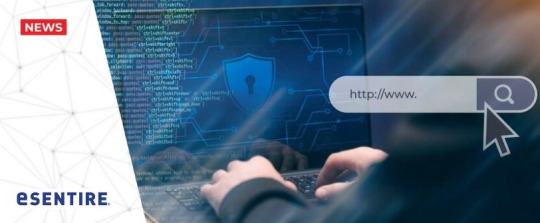
The United Arab Emirates (UAE) now has access to eSentire's Security Operations Center as a Service (SOCaaS), a top supplier of Managed Detection and Response (MDR) services. With the purpose of providing a wide range of services that are intended to prevent, detect, and mitigate cyberattacks, this expansion aims to assist enterprises in the United Arab Emirates in improving their cybersecurity posture.
eSentire's MDR strategy in the UAE is supported by a number of essential attributes and competencies:
Fast Onboarding: The company offers quick service onboarding, which enables businesses to begin taking use of their MDR services right away. Onboarding takes an average of just 14 days.
Foundational Services: Unlimited incident handling and round-the-clock threat hunting are included in eSentire as foundational services. This means there's no need for extra add-ons, and enterprises are guaranteed complete protection.
Attack Surface Coverage: The business offers comprehensive, multi-signal investigative capabilities encompassing identity, cloud, network, endpoint, and log sources. It expands the reach and efficacy of threat detection by supporting more than 300 technological integrations.
Read More - https://bit.ly/3S6VCRH
1 note
·
View note
Text
Why Threat Hunting Is Important For Security
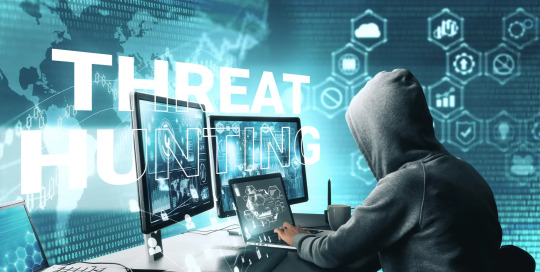
Threat hunting, often referred to as cyber threat hunting, is a proactive method for finding persistent, unremedied threats within the network of a company. Organizations should constantly be on alert for possible cyber pitfalls lurking around, given the fleetly evolving tactics, munitions, and technologies that hackers use. Unfortunately, it doesn’t make it any better knowing that no cyber security system is impenetrable or able of stopping every implicit trouble. Cyber trouble stalking is an essential exercise to proactively probe implicit negotiations, descry advanced pitfalls, and ameliorate cyber defenses. Some pitfalls may indeed be unidentified or unknown to the association until the damage has formerly been done. Let’s see how threat hunting influences the security level.
Discover Security Incidents Proactively
Threat hunting is vital to identify security incidents proactively. Threat hunting is used to come apprehensive of hidden threats(e.g., malware) lurking in the background and, eventually, identify perpetrators who are formerly intruding in the organization’s systems and networks. It can help to proactively identify adversaries who have formerly traduced the defenses and set up ways to establish a vicious presence in the association’s network. Hunting is used to stop the current attackers. A team of professional can always help you to secure from cyber threats, As the best Cybersecurity Consultant in Dubai, UAE SOC-365 offers a finest solutions for your organization.
Increase the Threat Response’s Speed
Threat hunting can shorten the period of detection of cyberattacks, enabling speedier identification of attackers or concealed malware. Threat hunting is essential for identifying the hazards that have evaded typical security measures because nearly half of attacks do so.
Investigation Time
A security team’s ability to better understand an incident from its extent to its causes and predict its consequences is made possible through threat hunting. In order to investigate potential compromises and strengthen cyberdefenses, an active technique that actively searches for malicious material in computer network traffic might help acquire crucial information for post-incident investigations. This will make it easier to draw out lessons learnt and fix any potential problems.
Reduce Overall Risks To The Organization
An organization’s systems and data are typically less likely to be damaged by threatening intruders and threats when threat hunting is used since it provides quicker response and a proactive approach.
Finding cyber threats is a challenging undertaking that needs the best personnel and software. The majority of organizations lack the tools necessary to handle it effectively on their own. Advanced analytical tools and a top-notch security operations centre (SOC) are needed.
SOC 365 offers Security Operations Center As A Service( SOCaaS) in Dubai, UAE is a centralized platoon of IT security professionals that observes and responds to cybersecurity incidents24/7. SOC 365 offers a range of cybersecurity services to help businesses cover against cyber pitfalls. To assist businesses keep ahead of any cyber threats, our skilled cybersecurity team is committed to providing threat detection, 24/7/365 monitoring, real-time threat detection, incident response, and reporting. The SOC 365 team is in responsible of monitoring an organization’s capacity to operate securely on a proactive basis, looking into attack evidence, analysing data, detecting circumstances that make it easy for attackers to launch attacks, and responding to threats or real incidents. SOC 365 offers real-time threat monitoring and detection to find potential threats and vulnerabilities that might be present within a company’s network, infrastructure, or applications.
0 notes
Photo

¿Cuáles son los beneficios de un SOC en la nube (SOCaaS) vs un SOC interno? Cada empresa tiene distintas necesidades de #seguridaddelainformación , así como en su capacidad técnica, presupuesto y otros recursos disponibles. Sin embargo, aquí hay algunos de los beneficios más importantes del porque elegir un SOC en la nube: 1. Escalabilidad: Un SOC en la nube puede ser más escalable que un #SOC interno, ya que el proveedor de la nube puede ofrecer recursos adicionales según sea necesario. Esto puede ser útil para empresas en crecimiento o que tienen fluctuaciones en la demanda de seguridad. 2. Costo: Los costos pueden ser un factor importante en la decisión de utilizar un SOC interno o en la nube. Tener un SOC interno puede requerir una inversión muy significativa en infraestructura, personal experto y herramientas de seguridad, mientras que utilizar un SOC en la nube puede ser más rentable a largo plazo. 3. Experiencia y capacidad técnica: Tener un SOC interno requiere contar con un equipo de profesionales de seguridad altamente capacitados y experimentados. Si la empresa no tiene el personal adecuado o no puede atraerlo, la solución es optar por un SOC en la nube (#SOCaaS) que tenga personal especializado, experto y herramientas avanzadas de #seguridadinformática . 4. Disponibilidad: Un SOC interno puede estar limitado por la disponibilidad de recursos, en cambio, un SOCaaS (en la nube) puede estar disponible 24/7, en cada momento de la semana, lo que puede ser importante para empresas que necesitan protección constante. ✳️ En Camel Secure contamos con un SOCaaS altamente calificado para las empresas que necesitan implementar un SOC o incluso para fortalecer su SOC interno. 💠 Solicita más información al correo [email protected] o si quieres ir al grano, solicita agenda al mismo correo. #empresas #cibercrimen #ciberdefensa #ciberataques #ciberseguridad #cybersecurity #vulnerabilidades #bsoc (en Latam) https://www.instagram.com/p/Cp7NeTqOnar/?igshid=NGJjMDIxMWI=
#seguridaddelainformación#soc#socaas#seguridadinformática#empresas#cibercrimen#ciberdefensa#ciberataques#ciberseguridad#cybersecurity#vulnerabilidades#bsoc
1 note
·
View note
Link
0 notes
Text
Proteggi la tua azienda: Antivirus vs. Servizio SOC con EDR e Next Generation Antivirus (NGA)
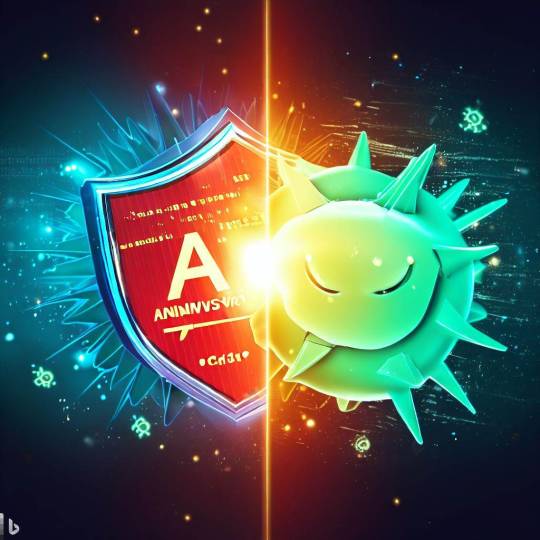
Estimated reading time: 5 minutes La sicurezza informatica è diventata cruciale per le aziende di tutte le dimensioni e settori. La crescente complessità delle minacce informatiche ha reso necessario l'uso di strumenti e servizi sempre più avanzati per proteggere le reti e i dispositivi. In questo articolo, esamineremo le differenze tra un software antivirus tradizionale e un servizio di Security Operations Center (SOC) con Endpoint Detection and Response (EDR) che include anche un Next Generation Antivirus (NGA). Scopriremo come questi due approcci si differenziano e come il servizio di SOCaaS della Secure Online Desktop possa aumentare la sicurezza aziendale.
Antivirus: la protezione di base
Funzionamento degli antivirus Un antivirus è un software progettato per proteggere il tuo computer o dispositivo dalle minacce informatiche come virus, malware, spywarex e altre forme di software dannoso. Gli antivirus funzionano principalmente attraverso la scansione dei file sul tuo sistema, confrontando ciascun file con una vasta banca dati di firme digitali conosciute associata a malware noto. Se viene rilevata una corrispondenza, l'antivirus può bloccare o mettere in quarantena il file per impedirne l'esecuzione. Limiti degli antivirus (tradizionali) Gli antivirus tradizionali offrono una protezione di base e sono generalmente efficaci nel rilevare e bloccare le minacce più comuni e note. Tuttavia, presentano alcuni limiti: - Reattività: gli antivirus si basano su firme digitali per identificare i malware, il che significa che sono efficaci solo contro minacce già note. Nuovi malware o varianti di malware esistenti possono eludere la rilevazione. - Mancanza di difesa contro attacchi avanzati: gli antivirus non sono progettati per difendere contro attacchi complessi e mirati, come quelli perpetrati da hacker esperti o gruppi di cyber-criminalità organizzata. - Rilevazione basata solo su firme: gli antivirus non sono in grado di rilevare comportamenti sospetti o anomalie nel sistema, il che limita la loro capacità di identificare e bloccare minacce emergenti e sofisticate.
Servizio SOC con EDR e Next Generation Antivirus: protezione avanzata
Cos'è un servizio SOC? Un Security Operations Center (SOC) è un centro di comando centralizzato responsabile della sicurezza informatica di un'organizzazione. Un SOC monitora continuamente le reti, i dispositivi e i sistemi per identificare e rispondere alle minacce informatiche. Un servizio SOC può essere interno o esterno all'organizzazione, come nel caso del SOC-as-a-Service (SOCaaS), in cui un fornitore esterno fornisce servizi di sicurezza gestiti. Endpoint Detection and Response (EDR) L'EDR è una tecnologia di sicurezza che monitora e analizza i dati provenienti dai dispositivi endpoint (come computer, laptop e dispositivi mobili) per rilevare, prevenire e rispondere ad attacchi informatici. A differenza degli antivirus, l'EDR si basa su tecniche di analisi comportamentale e machine learning per identificare minacce conosciute e sconosciute. Next Generation Antivirus (NGA) Un Next Generation Antivirus (NGA) è un'evoluzione degli antivirus tradizionali, progettato per fornire una protezione più completa e avanzata contro le minacce informatiche. Un NGA combina le funzionalità di rilevazione basate su firme degli antivirus tradizionali con tecniche avanzate come sandboxing, machine learning e analisi comportamentale per identificare e bloccare una vasta gamma di minacce, incluse quelle sconosciute o in evoluzione.
Differenze tra antivirus e servizio SOC con EDR e NGA
- Copertura delle minacce: mentre gli antivirus offrono una protezione di base contro minacce note, un servizio SOC con EDR e NGA fornisce una copertura più ampia e avanzata, incluso il rilevamento di minacce sconosciute o in evoluzione. - Analisi comportamentale: a differenza degli antivirus, che si basano principalmente sulla rilevazione basata su firme, un servizio SOC con EDR e NGA utilizza l'analisi comportamentale per identificare attività sospette o anomale nel sistema. - Proattività: mentre gli antivirus sono generalmente reattivi, un servizio SOC con EDR e NGA è proattivo, monitorando continuamente le reti e i dispositivi per identificare e prevenire gli attacchi prima che possano causare danni. - Sicurezza gestita: un servizio SOC offre un approccio gestito alla sicurezza, con esperti dedicati che monitorano, analizzano e rispondono alle minacce 24/7. Gli antivirus, invece, richiedono che l'utente finale mantenga aggiornato il software e intervenga manualmente in caso di problemi. - Risposta agli incidenti: un servizio SOC con EDR è progettato per rispondere rapidamente agli incidenti di sicurezza, limitando i danni e riducendo il tempo di recupero. Gli antivirus, d'altra parte, offrono una protezione più limitata in caso di attacchi avanzati o mirati.
Come il servizio di SOCaaS della Secure Online Desktop aumenta la sicurezza aziendale
Il servizio di SOCaaS della Secure Online Desktop offre un livello avanzato di protezione per le aziende di tutte le dimensioni. Ecco alcuni dei principali benefici di questo servizio: - Protezione completa: il servizio SOCaaS combina le funzionalità di EDR e NGA per offrire una protezione completa contro una vasta gamma di minacce informatiche, incluse quelle sconosciute o in evoluzione. - Monitoraggio 24/7: il servizio SOCaaS monitora costantemente le reti e i dispositivi per identificare e prevenire gli attacchi prima che possano causare danni. - Risposta rapida agli incidenti: il servizio SOCaaS è progettato per rispondere rapidamente agli incidenti di sicurezza, limitando i danni e riducendo il tempo di recupero. - Esperti di sicurezza dedicati: il servizio SOCaaS offre accesso a esperti di sicurezza dedicati che monitorano, analizzano e rispondono alle minacce 24/7. - Sicurezza scalabile: il servizio SOCaaS è scalabile per soddisfare le esigenze di sicurezza in continua evoluzione delle aziende, garantendo che siano sempre protette dalle minacce emergenti. In conclusione, un servizio SOC con EDR e NGA offre una protezione avanzata e completa rispetto agli antivirus tradizionali, proteggendo le aziende da una vasta gamma di minacce informatiche. Il servizio di SOCaaS della Secure Online Desktop rappresenta una soluzione ideale per aumentare la sicurezza aziendale, offrendo monitoraggio 24/7, risposta rapida agli incidenti e accesso a esperti di sicurezza dedicati. - EDR (Endpoint Detection and Response) - Differenza tra un SOC con NGS (Next Generation SIEM) e un SOC con EDR (Endpoint Detection and Response): Quale soluzione è la migliore per proteggere la tua azienda dalle minacce informatiche? - Next Generation SIEM: a che punto siamo - MDR, EDR o NGS: Scegli la soluzione di sicurezza informatica perfetta per la tua azienda! Read the full article
0 notes
Photo
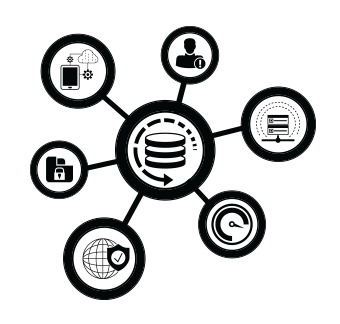
https://mdr.comodo.com/soc-as-a-service.php?afid=10110SOC-as-a-service is a software-based service which helps to ward off security threats in the online world. Get now! -
0 notes
Text
To pensando no fato de alguém poder, no mundo inteiro, achar essa conta aq. não tipo, ELA NÃO É PRIVADA, É PÚBLICA. GERAL PODE VER ISSO.
Ess guemall charaaa ssoii quiaa,, uee aonn stoxiee. Socaa rradoceenn. <3
11 notes
·
View notes
Text
How To Select The Right SOC As A Service Provider For Your Business?

Organizations are increasingly considering building security operations centers to centrally manage their detection and handling of cyber security issues as they face increasing threats and assaults against their information systems and data. Implementing a SOC frequently involves a significant investment in time, resources, and personnel. Additionally, organizations may encounter difficulties such as a lack of SOC skills and scalability. A Security Operations Center (SOC) is a team of experts that are responsible for detecting, preventing, investigating, and responding to cyber threats. No matter where your IT assets and data are, including in the cloud, on-site, and SaaS apps, SOC-as-a-Service safeguards them.
These are the key characteristics to consider when choosing a service provider.
24/7/365 SECURITY MONITORING
An organization can reduce the risk of a cyber security event that breaches regulatory standards by implementing a 24/7 SOC. The organization makes sure it is prepared to respond to any possible cyber security crisis before the attacker can access and steal critical and protected information by deploying 24/7 network monitoring, threat detection, and response. SOC 365 offers Security Operations Center As A Service (SOCaaS) is a centralized team of IT security professionals that monitors and responds to cyber security incidents 24/7. SOC 365 offers a range of cyber security services to help businesses protect against cyber threats.
SERVICES OFFERED
Before choosing one check the types of services they’re providing. The field of cyber threats is changing quickly, thus quick monitoring and action are needed to defend against future intrusions. The potential cost and harm to the organization from a cyber security problem increase the longer it remains unremediated. We offer services such as Threat monitoring and detection, vulnerability assessments, security consulting, compliance management and more.
LOCATION
Additionally, take your service provider’s location into account. If you want to engage a virtual SOC, you are less likely to give this much thought, although the location of your vendor may still be crucial for some factors. First, find out whether they have many locations. This is because a company with many locations may guarantee you superior backup and disaster recovery services. Next, discover where their team is located. With a virtual SOC, the group you work with may be located anywhere.
TEAM OF EXPERTS
You should analyze the technologies the service provider employs while thinking about SOC services. Technology is necessary, but a tool can only be effective when it is used by a qualified team of professionals. A crucial component of any cyber security team, human skills, knowledge, and expertise make up the ideal SOC service. These are a few of the things you need to take into consideration before choosing a SOC as a service. SOC as a Service is a smart cyber security value proposition for companies of all sizes in light of the growing security issues.
Contact us right now if you’re seeking the best provider. We’re prepared to assist you in enhancing security for your company as we work to create a safer future.
0 notes